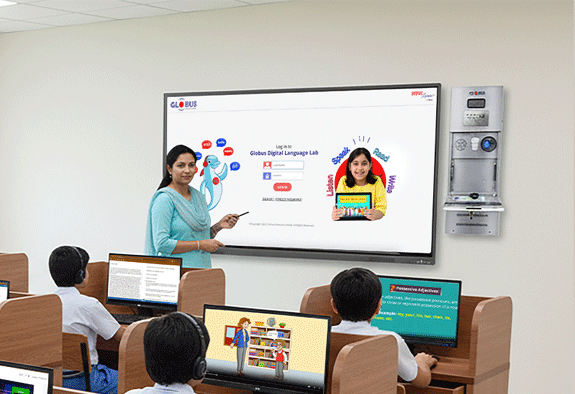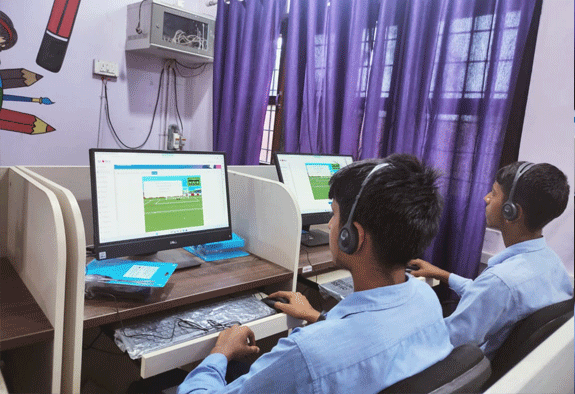
Today, the role of technology in language learning and education has become increasingly prominent. This is because it creates an engaging language learning environment, offers a platform of resources for language learning, caters to every type of learner, and accelerates the language learning process by empowering teachers. The right languages learning software for schools significantly enhance the learning experience for students, fostering engagement, proficiency, and confidence in English. With a plethora of language learning software options available to learn English, educators are faced with the challenge of selecting the most suitable platform for English language learning in their classrooms. In this blog, we'll explore the essential steps to guide educators in choosing the ideal language learning software tailored to enhance English language proficiency of every student..
1. Identify Learning Objectives for your students:
The first step in selecting software for English language learning is to identify your learning objectives. Clarifying these objectives will help you narrow down your options and focus on software that aligns with your teaching goals.
- Consider the proficiency level of your students and whether the language learning software caters to basic, intermediate, or advanced learners. Ideally, it best to look for a solution that caters to all proficiency levels
- Explore whether the software provides opportunities for assessment and progress tracking to monitor student performance and growth
- Advanced language learning software also provides soft skills modules for proficient learners to further enhance their communication and interpersonal abilities


2. Assess Content and Curriculum:
Evaluate the content and curriculum offered by the language learning software for schools.
- Assess whether the software aligns with your curriculum standards
- Look for comprehensive coverage of all language skills (listening, speaking, reading, and writing), as well as a variety of topics and contexts to engage students' interest.
- Assess the quality and relevance of the content to ensure it meets the learning needs of your students and aligns with your curriculum requirements
3. Consider Learning Styles and Preferences:
For educators, it’s extremely important to consider the learning styles and preferences of students
- Consider factors such as device compatibility, internet connectivity requirements, and accessibility features to guarantee that all students can effectively access and utilize the software, irrespective of their learning environment or resources
- Opt for a language learning software that supports multiple platforms, including iOS, laptops, PCs, and even digital boards, to ensure seamless integration and functionality across various devices used in the classroom. This ensures that the software works seamlessly regardless of the technology available to students.

4. Check Accessibility and Compatibility:
Prioritize language lab software that is accessible and compatible with the technology infrastructure in your classroom.
- Some students may excel with interactive, multimedia-rich content exercises, while others may prefer more guidance from you. Ensure that the software offers both Instructor-Led Training (ILT) and Web-Based Training (WBT) options to accommodate different learning preferences.
- Select a language lab software that provides a diverse range of learning activities and resources to cater to various learning preferences. This ensures maximum engagement and participation among all students, regardless of their preferred learning style
5. Trial and Test the Software:
Before making a final decision, take advantage of free trials or demo versions to test the language learning software in your classroom. Use this opportunity to explore the features, usability, and learning experience offered by the software firsthand
- Seek feedback on factors such as ease of use, effectiveness, technical support, and overall satisfaction to gain insights into the software's strengths and limitations.
- Solicit feedback from your students also to gauge their engagement and satisfaction with the software.
Conclusion
Choosing the right software for English language learning is a crucial decision that can significantly impact the learning outcomes of your students. By following these essential steps and considerations, educators can make informed decisions and select software that meets the unique needs of their classroom environment and students. With the right language learning software for schools in hand, educators can create engaging, interactive, and effective English language learning experiences that empower students to achieve fluency and proficiency in English






